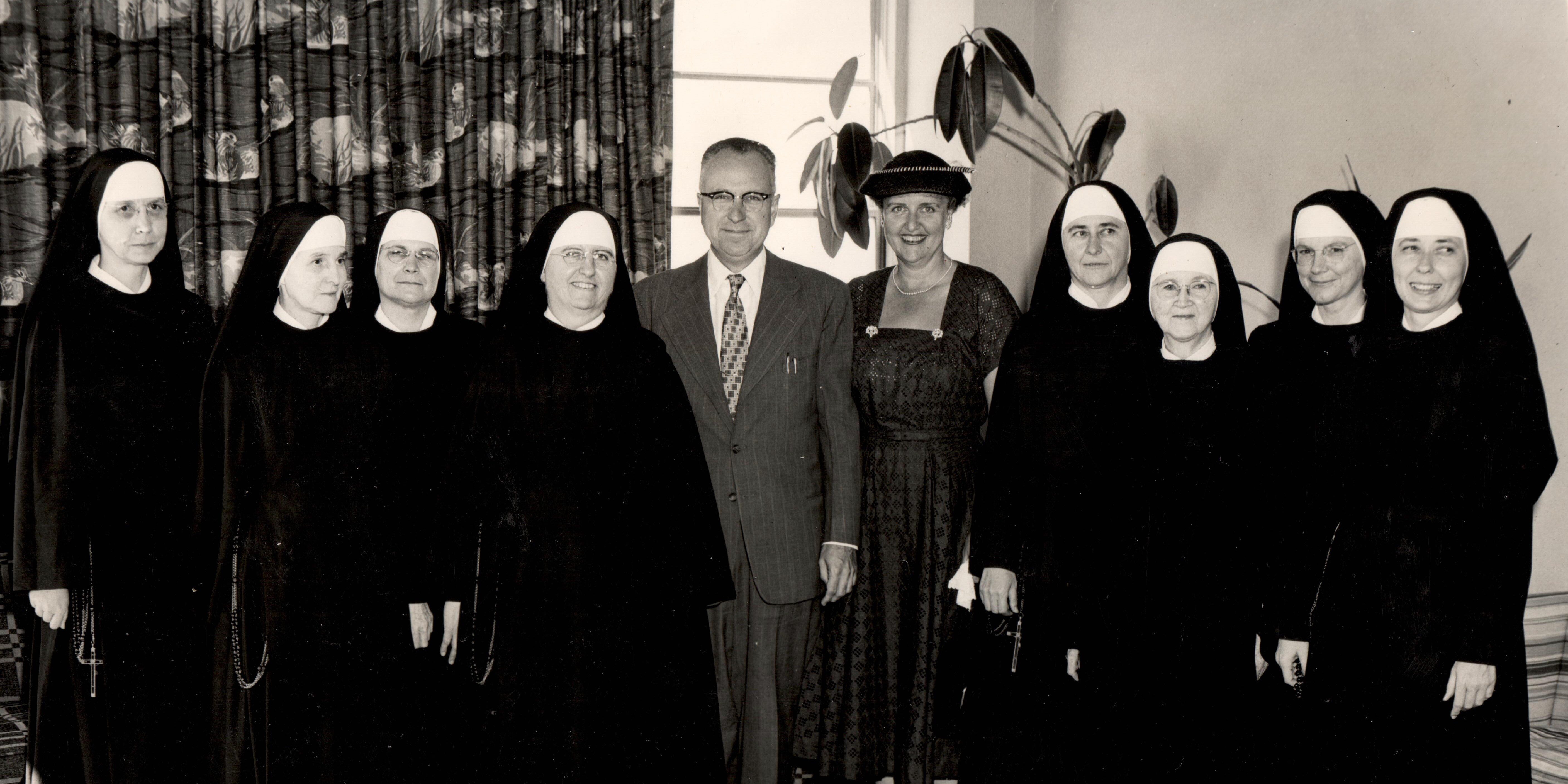When you look in the mirror, what do you see? Or, the better question is, whom do you see? We’re perhaps all familiar with the famous line from St. Paul’s letter to the Corinthians: “We see now through a glass darkly; but then face to face. Now I know in part; but then I shall know even as I am known” (1 Cor. 13:12). The phrase which we translate variously as “darkly” or “in a dark manner” is in enigmate in the Vulgate. An “enigma” is a riddle — something obscure and inexplicable, mysterious and mystical.
St. Paul suggests God is a mystery to us in this life. He also reminds us that the deepest desire of our hearts is to see Him “face to face”: to enter into a communion of knowledge in which there is no veil between knowing and being known. But we aren’t there yet. We gaze in the mirror, and we struggle to see clearly. In his commentary on this line from Corinthians, St. Thomas Aquinas offers us some insight into the ways we come to know God in this life:
[...] we know God in this life, inasmuch as we know the invisible things of God through creatures, as it says in Rom (1:20). And so all creation is a mirror for us; because from the order and goodness and multitude which are caused in things by God, we come to a knowledge of His power, goodness and eminence. And this knowledge is called seeing in a mirror.1
We can come to know God through His creation, most especially through creatures He made in His image: one another.
And here’s a lovely sort of paradox for us to meditate on — another enigma, if you will. We know that we are made in the image and likeness of God. But St. Catherine of Siena invites us to marvel at the fact that, in His Incarnation, God chooses to become our image: “We are your image, and now by making yourself one with us, you have become our image, veiling your eternal divinity in the wretched cloud and dung heap of Adam. And why? For love! You, God, became human and we have been made divine!”2
An enigma indeed! And so I return to my opening question: When you look in the mirror, whom do you see?
Let’s take this one step further and connect St. Thomas’s observation with St. Catherine’s by means of the poet Gerard Manley Hopkins. We come to know God in this life through creatures — and through His Incarnation, God has taken on a human face. And so, when we look at one another, as Hopkins says, we should see Christ, “for Christ plays in ten thousand places, / Lovely in limbs, and lovely in eyes not his / To the Father through the features of men’s faces.”3
The entire purpose of the Living the Quest interview series is to help us see in ourselves and in one another the light of Christ. These stories of courage, faith, hope and love take us through very real and very human struggles large and small: from job loss to chronic illness, from depression to genocide. Each story is intensely personal, but each one invites us to consider more deeply how we encounter God in the most difficult moments of our lives and offers us a glimpse of courage for the working-day world.
In the Gospel of St. John, Christ says, “I am the light of the world: he that follows me walks not in darkness, but shall have the light of life” (John 8:12). In the Gospel of St. Matthew, Christ turns the mirror around: “You are the light of the world. A city seated on a mountain cannot be hid. Neither do men light a candle and put it under a bushel, but upon a candlestick, that it may shine to all that are in the house. So let your light shine before men, that they may see your good works and glorify your Father who is in heaven” (Matt. 5:14-15). Christ is the light of the world, and we are called to mirror that light.


In The Divine Comedy, Dante uses this metaphor of mirrors and light to explain the amplification of love in Heaven: “That Good, ineffable and infinite, / which is above, directs Itself toward love / as light directs Itself to polished bodies. / Where ardor is, that Good gives of Itself … / And when there are more souls above who love, … mirror-like, each soul reflects the other” (Purg. 15.67-75). Every soul is a mirror of the light and love of God, and the more polished our mirror, the more we can reflect that light for others.
As Fr. Mike Schmitz said in his homily on All Saints’ Day at the Good News Retreat in Phoenix last fall, saints are those who say “yes” to God, and never stop saying “yes.” Each of the guests on the Living the Quest podcast reminds us that we’re not walking this journey alone. We may not be able to see God “face-to-face” in this life, but we can be reflections of His light and love for one another.
So, the next time you stop in front of a mirror, see God in the looking-glass — and then let your face be His mirror for everyone you meet.



